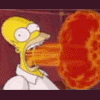R32 Brake Problem After Conversion - Pedal Goes To Floor
Announcements
-
Similar Content
-
Latest Posts
-
Auto is at least 10% (from my real, actual experience with different torque converters and manual on the same setup) ~185rwkw at 11.6psi (peak!) is entirely what one would expect without a FMIC or anything else on the intake, it does bleed off towards the higher RPM so it's what, 9psi there? Note: There is nothing that can be done about this with a manual boost tee. If you want to hold it steady and gain more top end, well - You will need electronic boost control.....
-
This makes sense. I have 2 so I'll just choose the least favourable child to perform the task. If all turns to shit, I've still got a spare. Win-win!
-
The correct PPE is to get one of the kids to spin it while you film from a safe distance...
-
When they're so hard you can't leave a black mark or make any smoke...
-
By DraftySquash · Posted
That was at 11.6 PSI. Apparently it was already peaking around 9 PSI just from intake and exhaust mods.
-









Recommended Posts
Create an account or sign in to comment
You need to be a member in order to leave a comment
Create an account
Sign up for a new account in our community. It's easy!
Register a new accountSign in
Already have an account? Sign in here.
Sign In Now